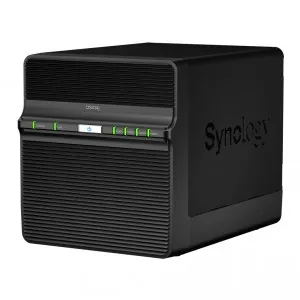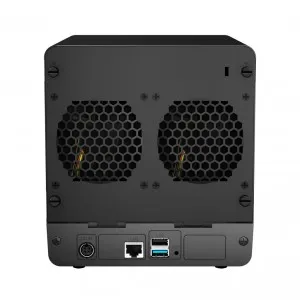Synology DS414J Review
 My need for storage have never been very high. I was very early to adopt SSD drives, because I loved the speed gains so much more than the loss of capacity of spinning hard drives. With my growing family, my wife started taking lots and lots of pictures and videos, and suddenly those SSDs weren’t big enough.
My need for storage have never been very high. I was very early to adopt SSD drives, because I loved the speed gains so much more than the loss of capacity of spinning hard drives. With my growing family, my wife started taking lots and lots of pictures and videos, and suddenly those SSDs weren’t big enough.
I originally was going to go with a Drobo, as I have used their products in the last, and really loved them. However, after thinking about our household setup, I decided it would be great to have some kind of NAS (Network Attached Storage) so that every device in my household could access the data. When it comes to any kind of NAS, Synology is the king, so that is where I went looking.
I picked up the DS414J from NCIX with 4 x 2TB hard drives. At the time, I thought I would never need that much storage, but it seems that you will find a way to use what you have (I’m currently at 94% full). The setup process was incredibly easy, even if you have no knowledge of RAID technology. You have a choice between setting it up with classic RAID or Synology’s own proprietary RAID technology. I choose to use the Synology technology in favour of speed.
Why Synology is the King of NAS

Once the DS414J was setup, I was able to log into the DiskStation web interface. The DiskStation software is the same, no matter which NAS you get from Synology, which makes choosing a device very easy. Since you don’t have to worry about software, and only your hardware requirements.
The amount of packages available to install are incredible. Your Synology can be a media server, VPN server, email server, git server, pretty much any kind of server you want. Some packages like Plex, are limited to the processing hardware of the device, but more on that later. I choose to install the media server, DS Video and DS Photo. The media server turns your NAS into a DLNA device, where as DS Video is a full media manager, like Plex or Kodi (formally XBMC).

The media server worked incredibly well, and I was able to see all my media from my Samsung TV. I wasn’t able to play any big MKV files (10GB or larger) using DLNA, due to speed limitations of the hardware. The DS Video interface is a lot nicer then browsing through a folder structure for media. The interface is fairly decent, comparable to a base install of Kodi. DS Video did have some problems not playing some videos if the file type was not correct.
Managing files was super easy. You can setup different users, and give them various permissions on folders you create on your Synology. I setup myself and my wife to have read/write access to all our photos, myself only to have read/write access to my server backups, and all guests to have read only access to our media library. I setup another user to have read/write access to a backup folder, and setup rsync to backup my Linode server to the Synolgoy.
My Gigabit Ethernet is Wasted on a Synology
Hard disks are slow. We are so accustomed to blazing fast SSDs, that even 7200 RPM drives feel super slow now. When you start to do RAID for redundancy, that speed gets even slower. Synology claims speeds of 107MB/s for read, and 76MB/s for writes. I found these to be best case scenarios, and found the average speed to be around 70MB/s for both read and write. They do have faster models for businesses, but all consumer grade products will be around this speed range.
I am a Plex user, and was very disappointed that I was unable to install Plex on the DS414J. This limitation is due to the CPU used in the DS414J. If you are looking to use Plex with a Synology, make sure you check the Synology requirements first. Since I bought the DS414J, Synology has come out with a hardware optimized box, specifically for encoding media. The DS415play will easily handle all Plex requirements.
I’ve been very happy with my Synology, and I think I will be upgrading to a DS415play in the near future. Once you have this much storage available on your network, your possibilities open up. Server backups become daily, rather then weekly (or monthly). You start keeping more and more media, because it’s easy to store and manage. Look into how your home and work life could benefit from a Synology box, and I bet you’ll find a good 4 or 5 ways you will be able to use it.